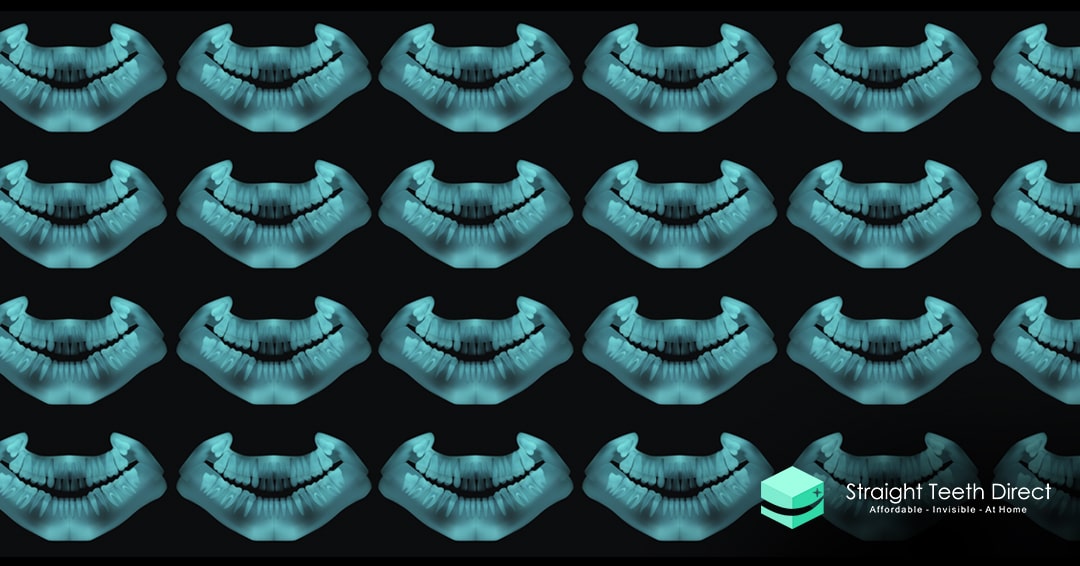
Orthodontic x-rays: will you need them before getting braces?

So you are thinking of getting your teeth straightened and you want to do so in the best and safest way possible. One of the questions that you might be asking yourself is about orthodontic x-rays, should you get x-rays before getting started?
First of all it’s important to understand dental x-rays are a useful and important part of dental examination, to ensure the correct diagnosis when there are some signs/symptoms or indications.
#1 What are x-rays?
X-rays are small doses of radiation that are able to pass through the body then expose an image on a computer or film to show a view of hard tissues of the body.
X-rays are great to see bones and calcified objects like teeth. They are not useful to see softer items like cartilage, muscle, tissue. They can be very useful to uncover things that could never otherwise be seen, and they help with the surgical planning of wisdom teeth, dental implants and jaw surgery.
It’s a useful tool, but that’s just it, it’s a tool it’s important to balance this with a respect and understanding of the implications of taking a dental x-ray.
#2 Are orthodontic x-rays safe?
All radiation have effects, in the tables below you can see the dosages based on the type of x-ray image done and the risks of cancer from diagnostic x-rays.
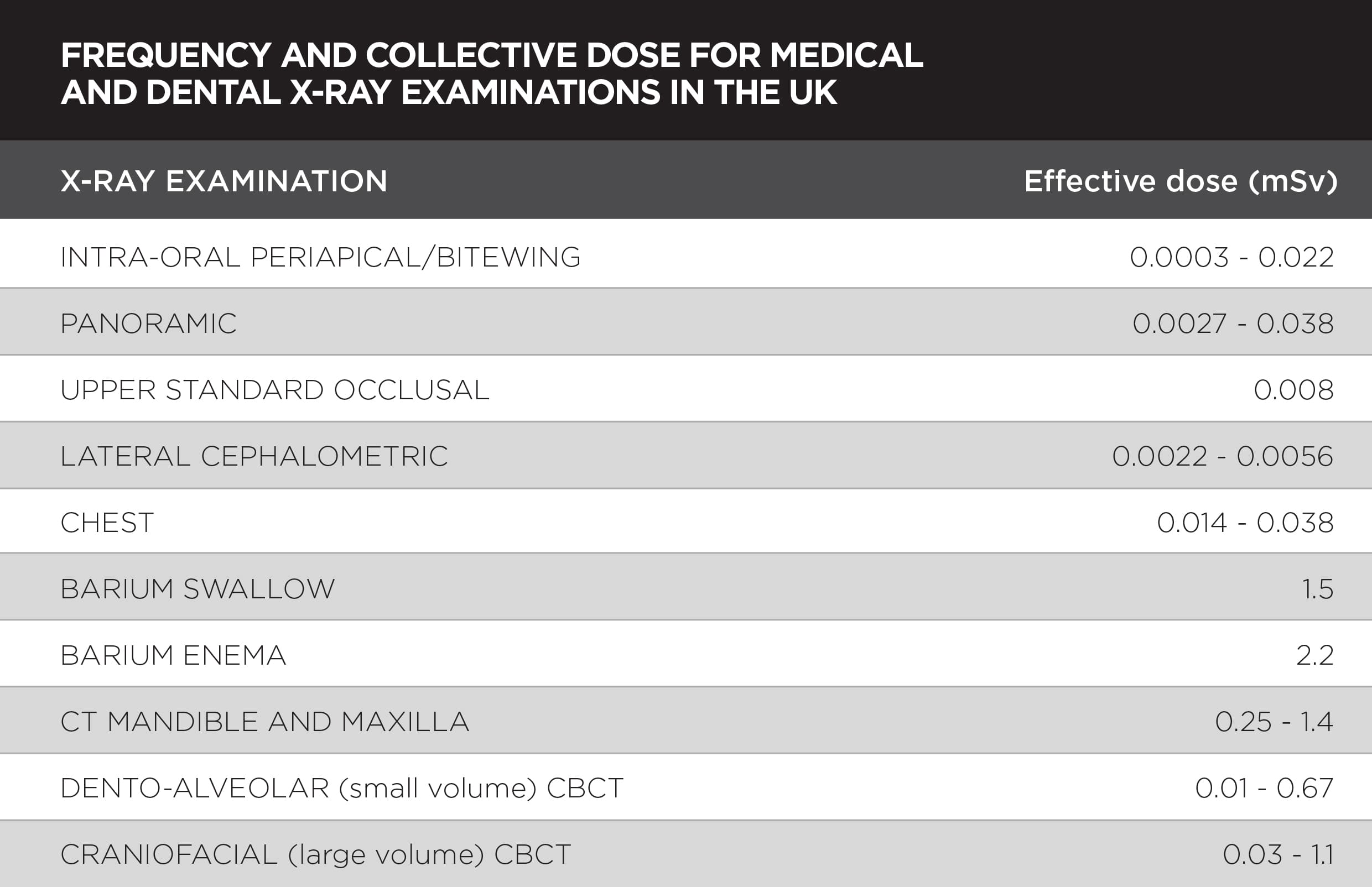
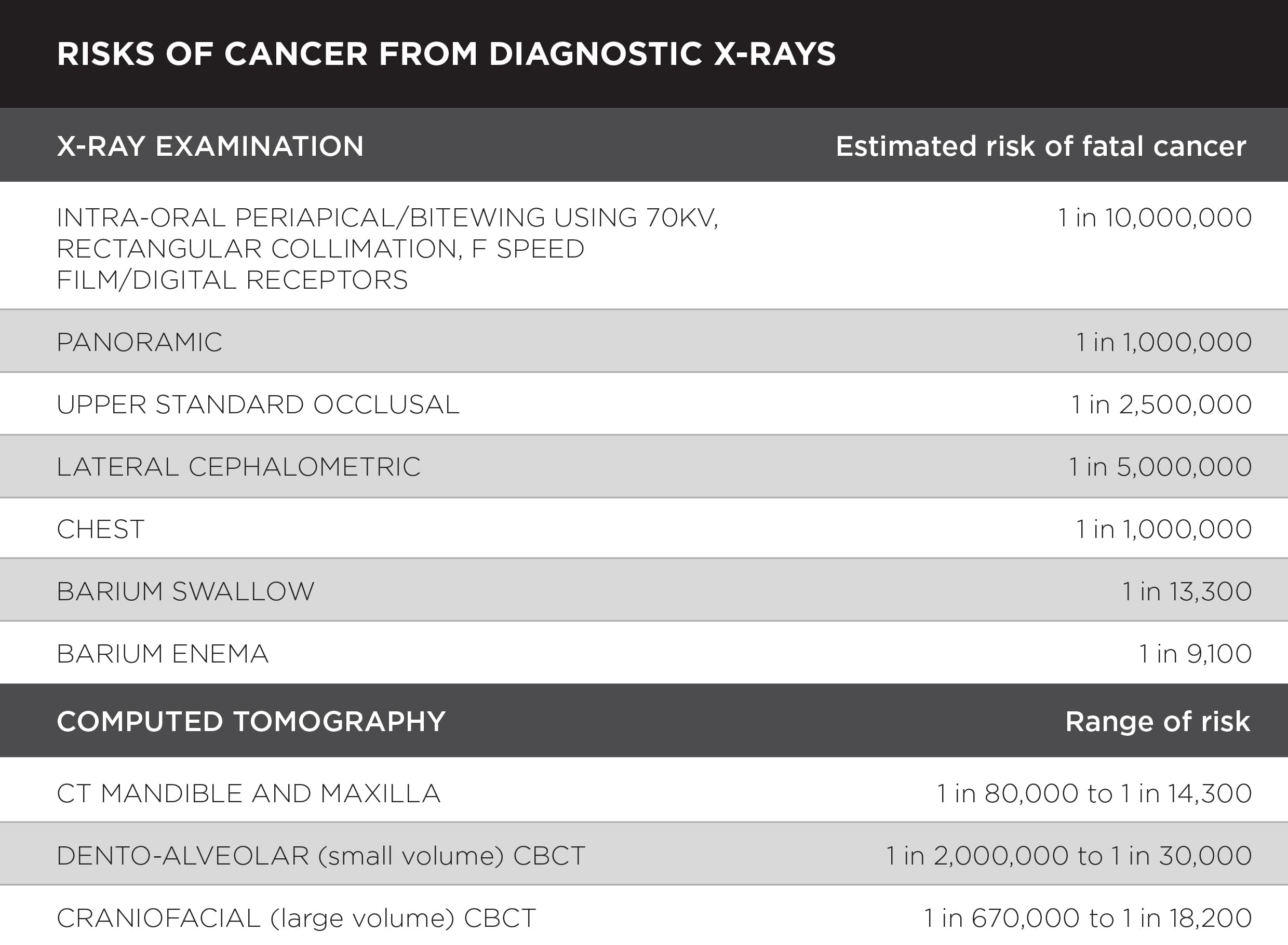
Here the risks are multiplied the younger the orthodontic patient is, so young patients under 10 or 15 are more vulnerable. However orthodontic x-rays if required should be taken and they pose minimal health risk, there is for example exposure to radiation from flying and everyday activities.
#3 What are the different types of dental x-rays?
There are 4 common types of dental x-rays:
Bitewings
Periapicals
OPG / Panoramic X-ray
CT-Scan
1. Bitewings are x-rays taken of your back teeth biting together on the left and right sides. These are used to check for tooth decay in between teeth, and bone levels around teeth.
They do not show the roots of the teeth. They are great for detail
2. Periapicals are x-rays taken of individual teeth – can be 1-2 teeth next to each other, and they show the full length of the tooth – including the root of the tooth. Periapicals are mainly used to check the root / nerve health of a tooth. They are great for detail.
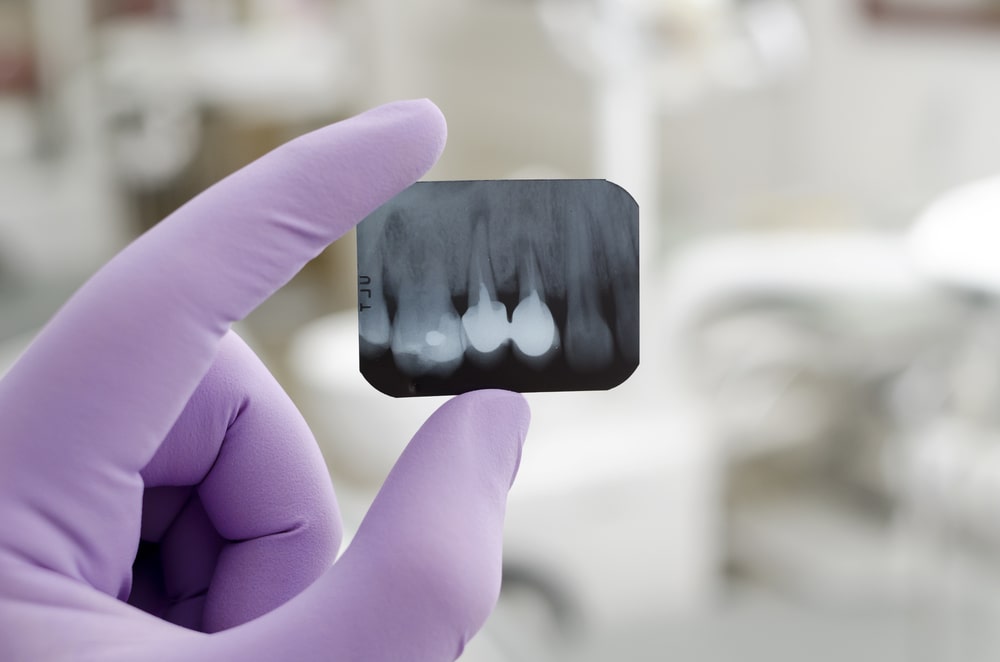
3. OPG / Panoramic x-rays – these are a view of your upper and lower jaws biting together.
They are great for showing the upper jaw, lower jaw, general bone levels, sinuses but are not good for close up detail on individual teeth. You can’t accurately diagnose early tooth decay on an OPG. They are great for general survey.
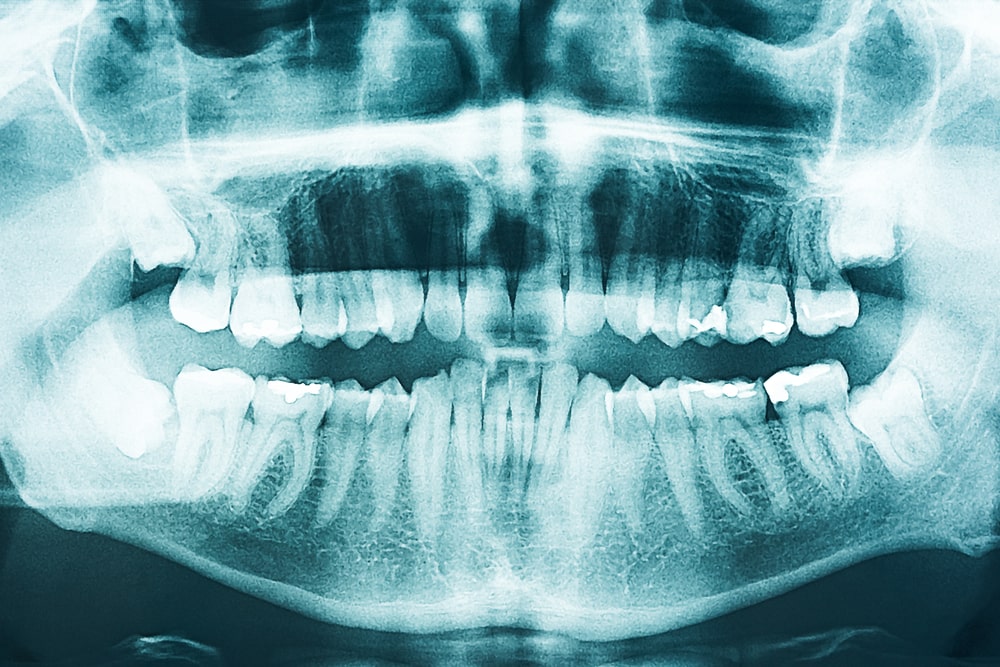
4. CT Scan – these are a 3D view of the upper and lower jaws. These are great when doing implant surgery and you want to use 3D planning software. They are however high in radiation and so should only be used when needed.
#4 How much are dental x-rays?
It’ll depends if you are having small x-rays taken as part of your routine dental exam or if those are panoramic x-rays.
The small x-rays are often absorbed into the cost of the visit or can cost from £10 to £50 depending on the clinic you visit.
For the full view of your mouth the price will depend if your dentist possess the x-ray machine on site or if you need to be referred to an OPG x-ray centre, either way the cost will vary between £60 and £150.
#5 The impact of financial incentives on dental x-rays
This study analysing 1.3 million treatment claims by Scottish NHS dentists made between 1998 and 2007, shows that in health systems that pay for x-rays, more x-rays are taken.
This gets worse in some countries like USA where some dentists / orthodontists now routinely do cone beam CT scans instead of OPG’s stating they can see more thus offer a higher standard of care. There is no evidence for this, the only evidence is the great increase in radiation from the CT scan (nearly 100x more than an OPG/Dental Panoramic x-ray), plus the additional charge to the patient.
We’ve once heard of a dentist calling his dental panoramic x-ray machine a “silent associate” – as in a silent employee that made them money.
#6 Do you need x-rays before starting orthodontic treatment?
The British Orthodontic Society states that for adults with healthy teeth, orthodontic treatment can be carried out without orthodontic x-rays.
“In patients with a healthy definition and supporting structures, orthodontic treatment may be carried out without the need for radiographs.”
It also states that it cannot justify the use of x-rays as a screening tool in people that don’t have any symptoms.
“These criteria rule out the practice of taking panoramic radiographs for all new patients and for using this type of radiograph to ‘screen’ asymptomatic patients” as quoted in Selection Criteria for Dental Radiography – Faculty of General Dental Practice.
So x-rays have a place in checking for tooth decay and gum disease periodically depending on clinical risk. But they unfortunately have been misused by some dentists.
Because we don’t cut out on the medical evaluation and your clinical safety at Straight Teeth Direct™ you are also given the choice and option to start treatment in the healthiest way possible, and as with any other orthodontic procedure, you’ll be given the option to share your x-rays. This will be done through your password protected account after your free e-consultation, where you’ll be able to upload a copy of your most recent x-rays (small or OPG) and your gum scores.
This gives the opportunity to your orthodontist to access all your records and info when prescribing your treatment remotely.
But as per the guidelines, if you don’t have access to your records or don’t want to have a new x-ray taken on purpose and you visit your dentist regularly, with not signs of symptoms, you won’t have to provide orthodontic x-rays unnecessarily, the most important is that you know you are dentally healthy.
Overall dental health is important so make sure you regularly visit your dentist, it’s also a great idea to keep copies of your x-rays so you can track when different views were taken.
X-rays are essential as a diagnostic tool and if you keep a record of them you can avoid having new ones taken too frequently.

Still thinking about it?
Fill in your email to receiveyour free guide!


















